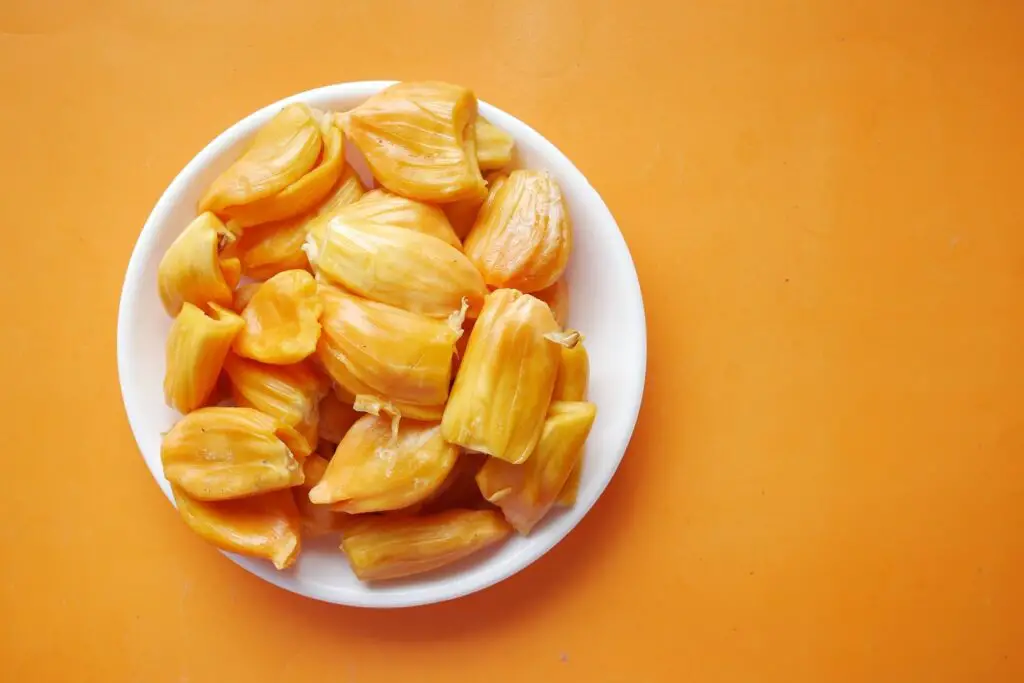
Montmorency cherries are a delicious and tart variety of cherries, often enjoyed for their vibrant red color and distinct flavor. These cherries are rich in antioxidants and have numerous health benefits. Freezing Montmorency cherries allows you to enjoy them throughout the year, even when they are out of season. By following a simple process, you can preserve their natural sweetness and texture. This article offers a comprehensive guide on freezing Montmorency cherries to ensure they remain delicious and ready for use in various recipes.
Here’s a step-by-step guide on how to freeze Montmorency cherries:
- Step 1: Select ripe and fresh Montmorency cherries
- Step 2: Wash and pit the cherries
- Step 3: Add optional sugar syrup (for better texture)
- Step 4: Arrange the cherries for freezing
- Step 5: Flash-freeze the cherries
- Step 6: Package and seal the cherries
- Step 7: Label and date the packages
- Step 8: Store in the freezer
Step 1: Select ripe and fresh Montmorency cherries
Selecting ripe and fresh Montmorency cherries is crucial for ensuring the best results when freezing them. Here’s why it’s important to choose the right cherries:
- Optimal Taste and Texture: Ripe Montmorency cherries are at their peak flavor and sweetness. They have a perfect balance of tartness and sweetness, making them a delightful addition to various dishes. Freezing ripe cherries preserves their natural taste and texture, so you can enjoy them just as if they were freshly picked.
- Even Freezing: Firm and plump cherries freeze more evenly than softer ones. When cherries are ripe and firm, their cellular structure allows for better preservation during freezing. This means that after thawing, the cherries will retain their shape and texture, instead of becoming mushy or disintegrated.
- Enhanced Visual Appeal: The vibrant red color of ripe Montmorency cherries is not only visually appealing but also indicates their maturity and ripeness. When you freeze cherries at their peak, they will maintain their beautiful color even after thawing, making them ideal for use in desserts and other culinary creations.
- Minimized Risk of Spoilage: Cherries with bruises or blemishes are more susceptible to spoilage, even when frozen. Damaged areas can harbor bacteria and enzymes that can degrade the overall quality of the cherries during freezing and storage. By selecting pristine cherries, you reduce the risk of spoilage and ensure a longer shelf life in the freezer.
- Better Nutritional Value: Ripe Montmorency cherries are known for their nutritional benefits, including being rich in antioxidants and vitamins. By choosing fresh and ripe cherries, you can lock in these nutrients during the freezing process, making them a healthy addition to your meals and snacks.
Step 2: Wash and pit the cherries
Washing and pitting the Montmorency cherries are essential steps in the freezing process to ensure cleanliness, safety, and ease of use. Here’s why it’s important to wash and pit the cherries properly:
- Removing Dirt and Residue: Washing the cherries under cool running water helps to remove any dirt, dust, or debris that might be present on the fruit’s surface. This is especially important if the cherries were harvested from the farm or if they have been handled by multiple people before reaching your kitchen. Cleaning them thoroughly ensures that no unwanted particles end up in the final frozen product.
- Maintaining Hygiene: Hygiene is crucial when handling any food, and cherries are no exception. Washing the cherries reduces the risk of potential contamination, ensuring that you and your family can enjoy the frozen cherries without any health concerns.
- Removing Pits: Montmorency cherries contain pits, which are inedible and could be a choking hazard if left in the fruit. Removing the pits before freezing makes it easier to incorporate the cherries into various recipes without worrying about accidentally biting into a hard pit. Additionally, pitting the cherries in advance saves time and effort when using the frozen cherries later on.
- Preserving Texture: Proper handling during the washing and pitting process helps maintain the cherries’ delicate texture. Careful washing prevents excessive moisture absorption, which can cause the cherries to become soggy or lose their vibrant color. Gentle pitting ensures the cherries retain their shape and structural integrity, preventing unnecessary damage.
- Better Distribution: Pitting the cherries also allows for more even freezing. When the pits are removed, the cherries can be spread out in a single layer during the freezing process, preventing them from sticking together. This ensures that each cherry freezes independently, making it easier to measure and use only the desired amount later on.
Can I freeze Montmorency cherries with the pits still intact?
It is recommended to pit the cherries before freezing them. Leaving the pits in can affect the texture and flavor of the cherries during freezing and thawing. Pitted cherries freeze more evenly and are easier to use in recipes later on.
Can I freeze Montmorency cherries without washing them first?
It’s recommended to wash Montmorency cherries before freezing them to remove any dirt or residue. However, make sure to dry them thoroughly before freezing to prevent excess moisture that could lead to freezer burn.
Step 3: Add optional sugar syrup (for better texture)
The optional sugar syrup step is a technique that can enhance the texture and overall quality of the frozen Montmorency cherries. While it’s not mandatory, it can be a valuable addition if you want to preserve the cherries’ flavor, prevent freezer burn, and create a delightful syrup that can be used in various culinary applications. Here’s why using a sugar syrup can be beneficial:
- Improved Texture: When cherries are frozen, they can sometimes develop a slightly icy or crystalline texture, especially if they are exposed to temperature fluctuations. By tossing the pitted cherries in a sugar syrup before freezing, the sugar acts as a natural antifreeze agent. It helps to control ice crystal formation, resulting in a smoother and more velvety texture when the cherries are thawed.
- Enhanced Flavor: The sugar syrup not only contributes to a better texture but also enhances the natural sweetness of the Montmorency cherries. The syrup infuses the cherries with sweetness evenly, ensuring that each fruit is coated in a thin layer of sugary goodness. As a result, the frozen cherries maintain their vibrant taste and delicious flavor, making them more enjoyable in various dishes.
- Syrup for Culinary Use: The sugar syrup created during this step can serve as a delightful addition to your culinary endeavors. You can use it as a drizzle over pancakes, waffles, or desserts. It can also be a fantastic sweetener for beverages, such as lemonades or cocktails. The cherry-infused syrup can add a burst of flavor to recipes beyond just the cherries themselves.
- Preventing Freezer Burn: The sugar syrup helps create a protective coating around the cherries, acting as a barrier against freezer burn. Freezer burn occurs when food is exposed to air in the freezer, leading to moisture loss and the degradation of texture and flavor. The sugar syrup provides an extra layer of protection, ensuring that your frozen cherries remain in top-notch condition during their time in the freezer.
It’s important to note that the sugar syrup is optional, and you can still freeze Montmorency cherries successfully without it. If you prefer to preserve the cherries in their natural state, you can skip this step and proceed with flash-freezing and packaging the pitted cherries as outlined in the earlier steps. However, if you want to elevate the texture, flavor, and versatility of your frozen cherries, giving the sugar syrup a try can be a worthwhile endeavor.
Step 4: Arrange the cherries for freezing
Arranging the pitted cherries in a single layer on a baking sheet before freezing is an important step to ensure that the cherries freeze individually and don’t clump together. Here’s why this step is crucial:
- Preventing Clumping: When cherries freeze, they can release some moisture, which might cause them to stick together if they are placed too close to each other. By arranging the pitted cherries in a single layer on the baking sheet, you ensure that they have enough space to freeze individually without touching or sticking together. This prevents the cherries from forming large clumps, making it easier to portion and use them later on.
- Even Freezing: Placing the cherries in a single layer allows for even and consistent freezing. When the cherries are not touching, the cold air in the freezer can circulate freely around each fruit, ensuring that they freeze uniformly. Even freezing helps preserve the cherries’ texture and flavor, maintaining their integrity throughout their time in the freezer.
- Easy Portioning: Once the cherries are fully frozen on the baking sheet, they can be easily portioned for later use. You can transfer the individually frozen cherries into airtight freezer-safe containers or resealable bags without them sticking together. This way, you can take out just the amount of cherries you need for a particular recipe, rather than thawing the entire batch at once.
- Faster Freezing: Placing the cherries in a single layer allows for faster freezing. The more space each cherry has, the quicker it can freeze solid. Rapid freezing helps preserve the cherries’ quality by minimizing the formation of large ice crystals, which can impact texture and flavor.
- Convenience: By arranging the cherries on a baking sheet lined with parchment paper or a silicone mat, you can avoid the hassle of trying to separate frozen cherries later on. The parchment paper or silicone mat prevents the cherries from sticking to the surface, making it easy to remove them once frozen.
Step 5: Flash-freeze the cherries
Flash-freezing the cherries is a quick and effective method of freezing them individually, preserving their shape and preventing clumping. Here’s why this step is essential in the freezing process:
- Individual Freezing: Flash-freezing involves rapidly freezing the cherries at very low temperatures. When the cherries are spread out in a single layer on the baking sheet, the cold air in the freezer can surround each cherry, freezing them individually. This prevents the cherries from sticking together and forming large, solid clumps.
- Preserve Texture and Flavor: Flash-freezing helps preserve the cherries’ texture and flavor. The rapid freezing process creates smaller ice crystals, which are less likely to damage the cell structure of the cherries. As a result, when you thaw the cherries later, they will have a better texture and taste closer to fresh ones.
- Easy Measurement and Portioning: Flash-frozen cherries remain loose and separate on the baking sheet, allowing you to measure and portion them easily. Whether you need just a few cherries for a smoothie or a larger quantity for a dessert, you can easily take out the exact amount you need without thawing the entire batch.
- Reduces Freezer Burn: Flash-freezing helps minimize the chances of freezer burn. Freezer burn occurs when ice crystals evaporate and re-condense on the surface of the cherries, leading to dehydration and a deterioration of quality. By freezing the cherries individually and quickly, you reduce the exposure time to potential air and moisture, minimizing the risk of freezer burn.
- Time Efficiency: Flash-freezing is a relatively quick process, usually taking about 1 to 2 hours. Compared to slower freezing methods, such as placing the cherries in a container, it saves time and allows you to use the cherries sooner. Once the cherries are frozen solid and firm, you can proceed to package them for longer-term storage.
Step 6: Package and seal the cherries
Packaging and sealing the flash-frozen cherries in airtight containers or resealable plastic bags is a crucial step to protect them from freezer burn and maintain their quality throughout their storage period. Here’s why this step is important:
- Prevent Freezer Burn: Freezer burn occurs when food is exposed to air inside the freezer. It leads to dehydration, ice crystal formation, and a deterioration in flavor and texture. By placing the flash-frozen cherries in airtight containers or resealable bags, you create a barrier that prevents air from coming into contact with the cherries. This significantly reduces the risk of freezer burn, ensuring that the cherries stay in top condition.
- Preserve Texture and Taste: Flash-frozen cherries already have an advantage in preserving their texture and taste due to the rapid freezing process. However, proper packaging further enhances this preservation. By sealing the cherries in airtight containers or bags, you help maintain their moisture content and prevent any off-flavors or odors from other freezer items from affecting the cherries.
- Easy Storage and Organization: Airtight containers and resealable bags make storage and organization more convenient. They come in various sizes, allowing you to portion the cherries according to your needs. You can stack and store the containers or bags efficiently in the freezer, saving space and keeping your freezer well-organized.
- Longer Shelf Life: Properly packaged and sealed cherries have a longer shelf life in the freezer. When stored in airtight containers or resealable bags, the cherries can remain in excellent condition for up to 12 months. This allows you to enjoy the taste of Montmorency cherries throughout the year, even when they are out of season.
- Easy Thawing: Airtight packaging also simplifies the thawing process. When you’re ready to use the cherries, you can take out just the amount you need without having to thaw the entire batch. Additionally, since the cherries are individually frozen, they won’t stick together, making it easy to scoop out the desired quantity.
Step 7: Label and date the packages
Labeling and dating the packages of frozen Montmorency cherries is a simple yet crucial step in the freezing process. Here’s why this step is essential:
- Identification of Contents: Labeling each package with the contents (in this case, “Montmorency Cherries”) allows you to easily identify what is inside without having to open the container or bag. When your freezer is filled with various frozen items, having clear labels ensures you can quickly find the cherries when you need them.
- Tracking Freshness: By including the date of freezing on the label, you can track the freshness of the cherries. Frozen cherries can remain safe to eat for an extended period, but their quality may deteriorate over time. Knowing the date of freezing helps you determine how long the cherries have been in the freezer and whether they are still at their best quality.
- First-In, First-Out (FIFO) Method: Labeling and dating the packages allow you to implement the first-in, first-out (FIFO) method when using the cherries. This means using the oldest packages first to ensure that none of the cherries go past their prime. By adhering to the FIFO method, you can avoid unnecessary waste and always enjoy the best-quality cherries available.
- Meal Planning and Inventory Management: Having clear labels and dates on the packages helps with meal planning and inventory management. You can easily see how much of the cherries you have left and plan your recipes accordingly. It also helps you keep track of your freezer inventory, so you know when it’s time to restock or use up certain items.
- Avoiding Confusion: If you freeze other fruits or ingredients in similar containers or bags, clear labeling helps avoid confusion. It ensures that you don’t mistakenly use cherries in recipes that call for different fruits or vice versa.
Step 8: Store in the freezer
Storing the sealed containers or bags of frozen Montmorency cherries in the coldest part of your freezer is the final step in the freezing process and is critical for ensuring their long-term quality and freshness. Here’s why this step is essential:
- Temperature Stability: The coldest part of your freezer provides a stable and consistent temperature, which is crucial for preserving the cherries’ quality. Fluctuations in temperature can lead to partial thawing and refreezing, which may affect the texture and taste of the cherries. Placing them in the coldest part ensures a uniform freezing environment, maintaining their integrity over time.
- Extended Shelf Life: Montmorency cherries are known for their ability to retain their quality when properly frozen and stored. By keeping them in the coldest part of the freezer, you can maximize their shelf life. When stored correctly, frozen Montmorency cherries can remain good for up to 12 months, allowing you to enjoy their delicious taste and health benefits throughout the year.
- Prevention of Freezer Burn: As mentioned earlier, freezer burn occurs when food is exposed to air in the freezer. Placing the sealed containers or bags of cherries in the coldest part reduces the likelihood of temperature fluctuations and air exposure, significantly reducing the risk of freezer burn and maintaining the cherries’ optimal texture and flavor.
- Optimal Texture and Taste: Freezing the cherries in the coldest part of the freezer helps maintain their texture and taste. The colder temperature ensures that the cherries freeze quickly and evenly, minimizing the formation of large ice crystals that can affect their cell structure. As a result, when you thaw the cherries later, they will closely resemble their fresh counterparts in terms of texture and taste.
- Space Management: The coldest part of the freezer is often the best location for long-term storage. By placing the cherries in this area, you can utilize the other sections of the freezer for storing other items that might not require the same level of coldness.
Other related questions
How do I defrost Montmorency cherries?
To defrost Montmorency cherries, transfer the sealed container or bag from the freezer to the refrigerator. Allow them to thaw slowly for several hours or overnight. For faster thawing, place the cherries in a sealed bag and submerge them in cold water, changing the water every 30 minutes until fully thawed. Avoid using hot water or the microwave, as it can lead to uneven thawing and loss of texture.
Can I use frozen Montmorency cherries directly in recipes without thawing?
Yes, you can use frozen Montmorency cherries directly in recipes that require cooking or baking. However, if you want to use them as a topping or in dishes where you prefer a softer texture, it’s best to thaw them in the refrigerator or at room temperature before use.
Can I refreeze Montmorency cherries?
Yes, you can refreeze Montmorency cherries, but it’s best to do so only if they have been thawed in the refrigerator and kept at a safe temperature (below 40°F) throughout the thawing process. Refreezing cherries that have been thawed at room temperature or in warm water is not recommended, as it may lead to bacterial growth and food safety issues. Always handle frozen foods with care to maintain their quality and safety.
How do I know if the Montmorency cherries have gone bad after being frozen?
To determine if Montmorency cherries have gone bad after being frozen, look for signs of freezer burn, such as dry, discolored, or shriveled fruit. Additionally, if the cherries develop an off smell or taste, it may indicate spoilage. Properly stored frozen Montmorency cherries can remain safe to eat for up to 12 months, but any noticeable changes in appearance, texture, or flavor may suggest they are no longer suitable for consumption. When in doubt, it’s best to discard them to ensure food safety.








